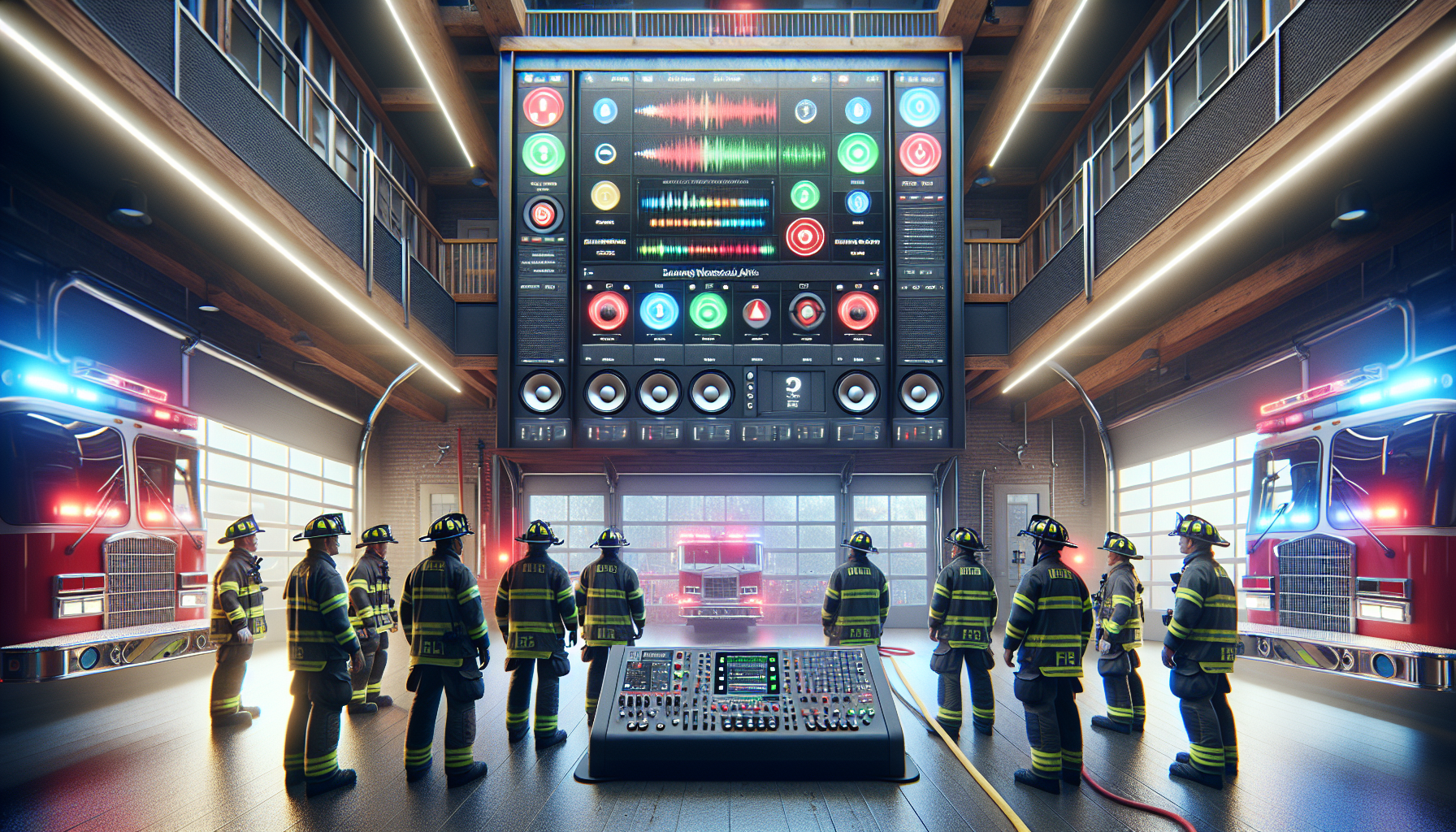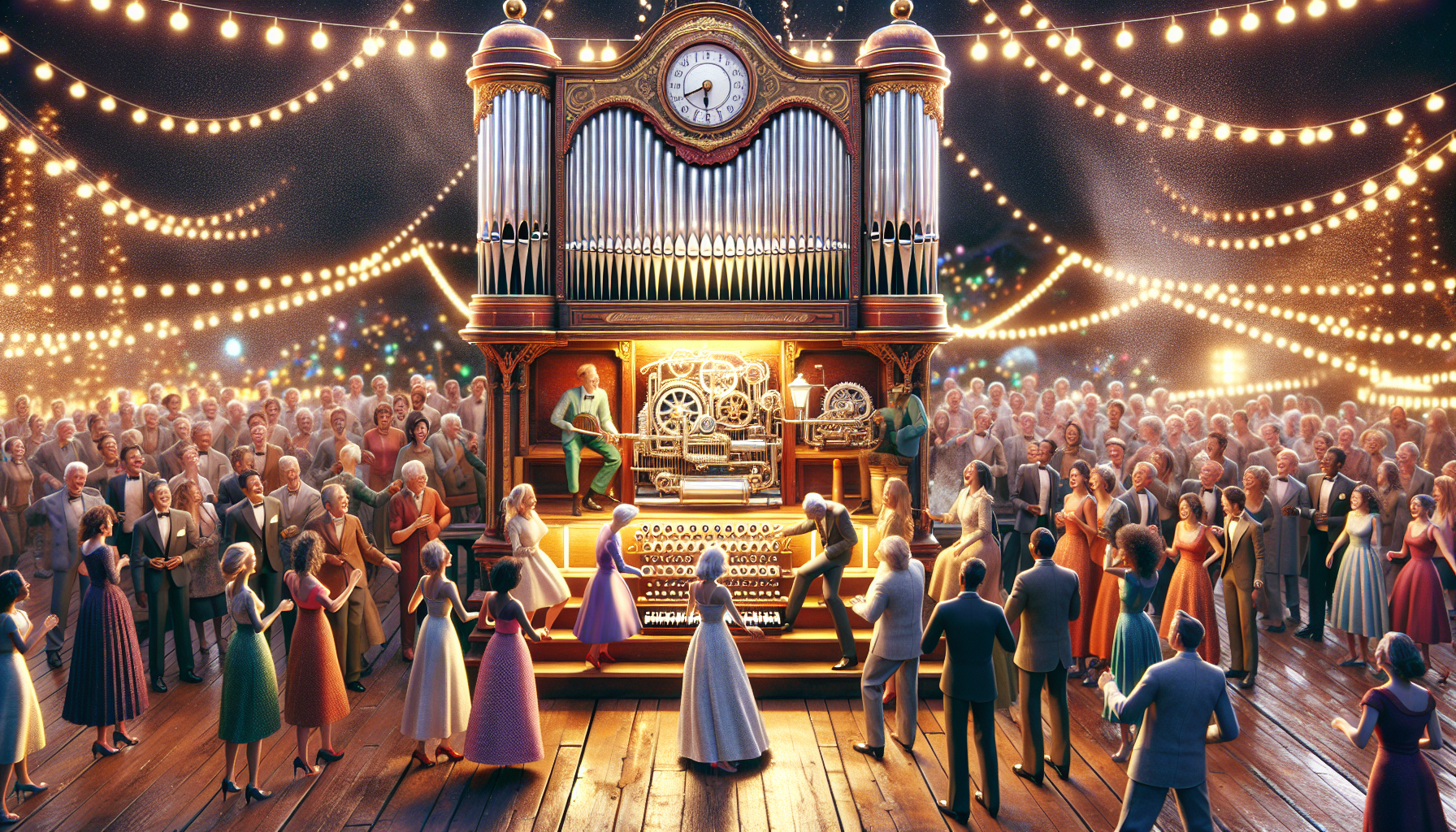In the world of theatre, where every detail matters, the magic often lies in the subtleties that bring a story to life. Imagine sitting in a dimly lit auditorium, the air thick with anticipation, as the curtain rises. The scene is set, the actors take their positions, and as the plot unfolds, a swirling mist creeps across the stage, wrapping the performers in an ethereal embrace. This is the art of theatre steam effects—an often-underestimated element that can transform a simple performance into an unforgettable experience. In this article, we delve into the fascinating world of steam effects, exploring how they can enhance the drama and elevate your production to new heights. 🎭
From the grandiose spectacles of Broadway to intimate black-box theaters, steam effects have been a staple of stagecraft for decades. Yet, while they are often associated with large-scale productions, their versatility makes them suitable for any size or type of performance. Whether you’re aiming to create a mystical atmosphere, simulate the chaos of a battlefield, or subtly emphasize a dramatic moment, the strategic use of steam can captivate your audience’s imagination. We will explore various techniques and technologies that have revolutionized steam effects, offering insights into how you can seamlessly integrate them into your own productions.
Incorporating steam into your production isn’t just about aesthetics; it’s about storytelling. Each wisp of vapor has the power to evoke emotion, symbolize transformation, or mark a pivotal moment in the narrative. In the sections that follow, we’ll discuss the artistic and practical aspects of using steam effects. From understanding the basics of stage fog and mist machines to mastering the art of timing and placement, we’ll guide you through the process of making informed choices that align with your creative vision. Moreover, we’ll touch upon safety considerations and the environmental impact, ensuring that your dramatic enhancements are as responsible as they are spectacular.
But it’s not just about the technicalities. At its core, theatre is about connecting with the audience, and steam effects offer a unique opportunity to bridge the gap between the stage and the spectator. By manipulating the sensory environment, you can draw viewers deeper into the story, allowing them to feel the tension, suspense, or tranquility alongside the characters. As we journey through the enchanting possibilities of steam effects, prepare to be inspired to push the boundaries of traditional theatre and breathe new life into your next production. Let the curtain rise on a world where imagination and innovation converge, and discover how to make every performance a masterpiece. 🌟
Understanding Theatre Steam Effects
Theatre steam effects have been a pivotal component in elevating the emotional impact and visual intrigue of live productions. As theatre has evolved, so has the complexity and sophistication of its special effects, with steam becoming an increasingly popular choice for directors looking to add a dynamic element to their performances. The use of steam can evoke a range of atmospheres, from mysterious fog to dramatic explosions, enriching the storytelling by enhancing the audience’s sensory experience.
There are several techniques to create steam effects, and choosing the right one depends on factors such as the type of production, the desired visual impact, and safety considerations. Traditional methods, such as dry ice and fog machines, are common, but recent innovations have introduced more environmentally friendly options that reduce the risk of allergens and other health concerns. Understanding the different methods available is crucial for making informed decisions that will both impress audiences and maintain the safety of the cast and crew.
Incorporating steam effects requires a solid understanding of the equipment and materials involved. Directors and technical teams must consider the setup and operation of the devices, as well as the timing and duration of the effects. Collaborating closely with experienced technicians can ensure that the desired outcomes are achieved without unexpected disruptions. Moreover, rehearsals with steam effects are essential to refine the timing and ensure that all elements work harmoniously to support the narrative of the play.
The Science Behind Steam Effects
Steam effects in theatre are grounded in simple scientific principles. By heating water to create vapor, these effects can mimic natural phenomena such as mist and smoke. The key is controlling the temperature and pressure to produce the desired amount and density of steam. This can be achieved using specialized equipment designed for theatrical productions, such as steam generators and fog machines.
Steam generators are particularly effective for producing thick, opaque clouds that can fill a stage or create localized effects. They operate by heating water in a chamber until it reaches a boiling point, releasing steam that can be directed through pipes or vents. Conversely, fog machines use a fluid, often a mixture of water and glycol, that is heated to create vapor. This vapor is then expelled into the air, where it cools and condenses to form fog.
To maximize the effectiveness of steam effects, technicians must carefully calibrate the equipment and adjust settings such as temperature, pressure, and airflow. These adjustments can dramatically alter the appearance and behavior of the steam, allowing for precise control over the effect. Experimentation and practice are key to mastering these settings and achieving the intended dramatic impact.
Choosing the Right Equipment
Selecting the appropriate equipment for theatre steam effects involves considering several factors, including the size of the performance space, the complexity of the desired effects, and budgetary constraints. Each type of equipment has its strengths and limitations, and understanding these can guide decision-making to ensure the best results.
Fog machines are a popular choice for their versatility and ease of use. They are available in various sizes and power levels, making them suitable for both small venues and large stages. Some models offer additional features, such as timers and remote controls, which can enhance the precision and timing of effects. However, they can be limited by their reliance on fog fluid, which may not be suitable for all environments due to potential allergens or residue.
Steam generators, on the other hand, are known for producing dense, natural-looking clouds of steam. They can be more complex to operate and require careful handling to ensure safety. However, their ability to create realistic effects makes them a valuable tool for productions aiming to replicate natural environments or dramatic weather conditions.
| Equipment Type | Pros | Cons |
|---|---|---|
| Fog Machines | Versatile, Easy to Use, Remote Control Options | Potential Allergen, Residue from Fluid |
| Steam Generators | Realistic Effects, Dense Steam | Complex Operation, Safety Concerns |
Innovations in Steam Technology
Recent advancements in technology have led to the development of new types of steam effects equipment that offer enhanced capabilities and improved safety features. For example, low-lying fog machines use dry ice or special cooling techniques to produce fog that stays close to the ground, creating a striking visual effect without the need for large amounts of fog fluid.
Another innovation is the introduction of wireless and battery-operated devices, which offer greater flexibility and mobility in staging. These devices can be easily repositioned and controlled remotely, allowing for dynamic and adaptable effects. Moreover, advancements in material science have led to the creation of non-toxic fog fluids that minimize health risks, making steam effects more accessible and safer for performers and audiences alike.
Integrating Steam Effects into Your Production
The successful integration of steam effects into a theatre production requires careful planning and coordination among the creative team. From the initial design phase to the final performance, every detail must be considered to ensure that the effects support the narrative and enhance the overall impact of the show.
One of the first steps in integrating steam effects is to establish clear communication between the director, technical crew, and performers. This collaboration is crucial to ensuring that the effects are executed safely and effectively. During rehearsals, the technical team should work closely with the cast to refine the timing and interaction with the effects, ensuring that they complement the action on stage without overshadowing it.
In addition to technical considerations, the artistic vision for the production should guide the use of steam effects. Directors should consider how these effects can enhance the mood and atmosphere of each scene, creating a cohesive visual language that supports the story. By thoughtfully integrating steam effects, productions can create memorable and immersive experiences that captivate audiences and elevate the drama.
Practical Considerations and Safety Measures
Implementing steam effects in theatre involves several practical considerations, from equipment setup to maintenance and safety protocols. Ensuring the safety of performers and audiences is paramount, and this requires adherence to guidelines and regulations governing the use of theatrical effects.
One key aspect of safety is proper ventilation. Steam and fog effects can contribute to reduced visibility and air quality, so adequate ventilation must be maintained to prevent discomfort or health issues. Additionally, equipment should be inspected regularly to ensure it is functioning correctly and safely, with any necessary repairs or replacements made promptly.
Another important consideration is the placement of equipment on stage. Fog machines and steam generators should be positioned strategically to achieve the desired effects without obstructing performers or creating hazards. Careful planning and testing during rehearsals can help identify potential issues and refine the staging of effects.
For more insights on integrating steam effects in theatre productions, watch this informative video: “The Art of Stage Effects” by Stagecraft Channel.
- Enhance storytelling with steam effects.
- Ensure safety with proper equipment and protocols.
- Experiment with new technologies and innovations.
Conclusion: Exploring the Impact of Steam Effects
Incorporating steam effects into theatre productions offers exciting opportunities to enhance the visual and emotional impact of a performance. By understanding the science behind these effects, selecting the right equipment, and integrating them thoughtfully into the production, theatre practitioners can create memorable experiences that captivate audiences.
Whether through traditional fog machines or cutting-edge steam generators, the possibilities for creativity are vast. Directors and technical teams who embrace these innovations can push the boundaries of theatrical storytelling, crafting compelling narratives that resonate with audiences long after the final curtain falls.
In revisiting the pivotal elements discussed in our exploration of theatre steam effects, we find ourselves at the intersection of creativity, technology, and audience engagement. Theatre, an ancient form of storytelling, has continually evolved to incorporate new technologies that enhance its expressive capabilities. Among these, steam effects stand out as a versatile and impactful tool in the director’s arsenal, capable of transforming ordinary scenes into extraordinary experiences.
We began by examining the history of steam effects in theatre, tracing their roots back to the 19th century when innovators sought new ways to captivate audiences. This historical context underscores the enduring appeal of steam as a medium for creating atmosphere and emotion on stage. It is a testament to the timeless nature of storytelling and the perpetual quest for innovation in the arts.
The technical aspects of implementing steam effects were thoroughly explored, highlighting the importance of safety and precision. As with any theatrical technology, the magic lies in the details. Steam effects require careful planning and execution to ensure they enhance rather than distract from the performance. We discussed various types of steam equipment, from traditional boilers to modern fog machines, each offering unique benefits and challenges.
A key takeaway from our discussion is the dramatic impact steam effects can have on a production. Whether used to suggest mystery, tension, or otherworldly phenomena, steam adds a sensory dimension that can profoundly influence audience perception. The visual spectacle created by steam can serve as a powerful narrative device, supporting and amplifying the themes and emotions of a play.
Moreover, we considered the role of collaboration in successfully integrating steam effects into a production. Directors, designers, and technicians must work in concert to ensure that steam is not merely an add-on, but an integral component of the storytelling process. This collaborative effort extends beyond the technical team to include actors, whose performances are complemented and enriched by the atmospheric presence of steam.
The environmental and ethical considerations of using steam effects were also addressed. As the theatre community becomes increasingly aware of its environmental footprint, sustainable practices are paramount. We explored eco-friendly alternatives and the potential for innovation in this area, emphasizing the need for conscious choices that do not compromise artistic integrity.
Finally, we reflected on the audience’s role in the theatre experience. Steam effects, when executed effectively, can bridge the gap between performer and spectator, drawing the audience deeper into the story. This immersive quality of steam is a powerful reminder of theatre’s unique ability to evoke emotions and create shared experiences.
In conclusion, the use of steam effects in theatre is not merely a technical feat but a continuation of the rich tradition of theatrical innovation. It represents the endless possibilities of combining artistry with technology to captivate and inspire. As theatre practitioners and enthusiasts, we are called to embrace these tools thoughtfully and creatively.
We encourage you, dear reader, to engage with this exciting aspect of theatre. Whether you are a director looking to incorporate steam into your next production, a designer seeking inspiration, or an audience member eager to experience the magic, the possibilities are endless. Share your thoughts and experiences with us, and let’s continue this conversation. Your insights and creativity are invaluable to the ongoing evolution of theatre. 🎭
For further reading and resources, you can explore these active links:
– Theatre Safety Guide for comprehensive insights on safe practices in implementing stage effects.
– Innovative Theatre Technologies for the latest advancements in stagecraft.
– Sustainable Theatre Practices to explore eco-friendly approaches in the theatre industry.
By sharing knowledge and ideas, we contribute to a vibrant and sustainable future for theatre arts. Let’s continue to push boundaries, inspire audiences, and celebrate the wonder that is live performance. 🌟
Toni Santos is a visual historian and creative artisan whose work channels the bold spirit of the steam-powered era—a time when imagination, mechanics, and ambition converged to reshape the modern world. Through richly detailed visual narratives and handcrafted design, Toni celebrates the legacy of steam innovation as both an artistic and technological revolution.
Driven by a passion for mechanical aesthetics, forgotten inventions, and industrial-age ingenuity, Toni reimagines the world of steam through illustrations, tactile artifacts, and storytelling that capture the poetry of pressure, motion, and invention. From piston-driven engines to brass-detailed diagrams, each piece reveals how steam wasn’t just power—it was promise.
With a background in visual design and historical research, Toni brings a craftsman’s eye and a dreamer’s heart to the stories of tinkerers, inventors, and visionaries who shaped the 19th century. His work doesn’t merely document machines—it honors the culture, courage, and creativity that drove a world to reimagine itself through gears, valves, and vapor.
As the creative voice behind Vizovex, Toni shares curated articles, reconstructed blueprints, and visual interpretations that bring this industrial past to life. His collections serve as a tribute to:
The elegance of steam-era design and innovation
The human stories behind great mechanical feats
The aesthetic beauty found in function and form
The echo of invention in today’s creative world
Whether you’re a history lover, a fan of steampunk, or an admirer of antique technology, Toni welcomes you into a world where art and machinery fuse, one cog, one drawing, one rediscovered marvel at a time.





